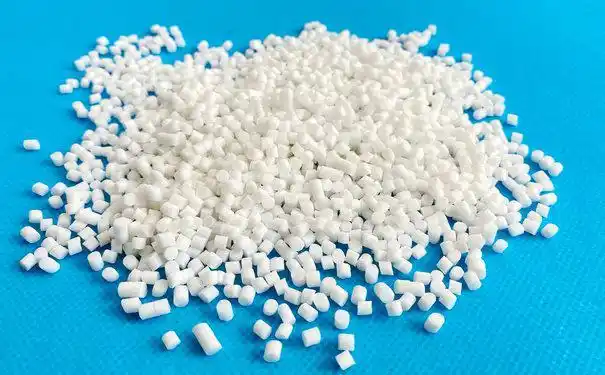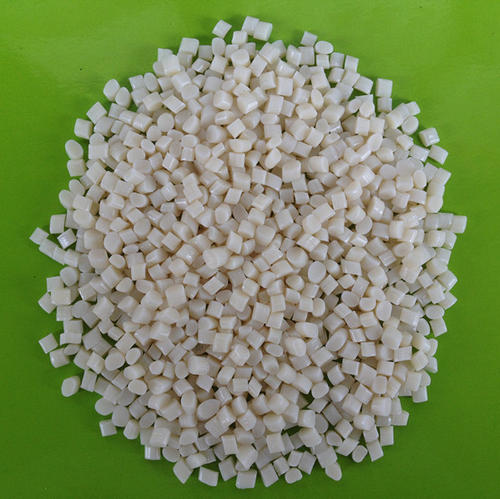As someone who’s been in the materials industry for over a decade, I’ve seen firsthand how choosing the right material can make or break a project. Whether you’re designing a medical device, crafting consumer goods, or working on an industrial application, understanding the nuances of materials like Thermoplastic Elastomer (TPE) and Polyvinyl Chloride (PVC) is critical. These two materials often come up in discussions because they’re versatile, widely used, and sometimes interchangeable—but they’re not the same. In this article, I’ll walk you through their key differences, drawing from my experience and practical insights to help you decide which material suits your needs best.

A Quick Introduction to TPE and PVC
Before diving into the details, let’s set the stage. TPE is a family of materials that combine the elasticity of rubber with the processability of thermoplastics. It’s soft, flexible, and can be molded into various shapes, making it a go-to for products like medical tubing, seals, or even phone cases. PVC, on the other hand, is a rigid or flexible plastic made from vinyl chloride. You’ll find it in everything from construction pipes to flexible hoses, depending on how it’s formulated.
Both materials are popular because they’re cost-effective and adaptable, but their properties, applications, and environmental impact differ significantly. Let’s break it down step by step.
Key Properties of TPE and PVC
To understand the differences, we need to look at their core characteristics. Over the years, I’ve worked with manufacturers and engineers who prioritize specific traits depending on their project requirements. Here’s a breakdown of how TPE and PVC compare in terms of physical and chemical properties.
TPE: The Flexible All-Rounder
Flexibility and Elasticity: TPE feels like rubber but doesn’t require vulcanization, which makes it easier to process. It can stretch and return to its original shape, which is why it’s a favorite for products needing elasticity, like gaskets or wearable devices.
Temperature Resistance: TPE performs well across a range of temperatures, typically from -30°C to 120°C, though this depends on the specific grade. I’ve seen it used in outdoor applications where flexibility at low temperatures is crucial.
Chemical Resistance: TPE resists many chemicals, oils, and UV light, but it’s not as robust as some other materials in harsh environments.
Recyclability: One of TPE’s biggest strengths is that it’s recyclable. As a thermoplastic, it can be melted and reshaped multiple times without losing its properties.

PVC: The Versatile Workhorse
Rigidity vs. Flexibility: PVC comes in two forms: rigid and flexible. Rigid PVC is stiff and strong, used in pipes and window frames, while flexible PVC, achieved by adding plasticizers, is used in cables and hoses. This dual nature makes PVC incredibly versatile.
Durability: PVC is tough and resistant to weathering, chemicals, and corrosion, which is why it’s a staple in construction. I’ve seen PVC pipes last decades in harsh conditions.
Temperature Limitations: PVC is less flexible at low temperatures and can soften or deform above 80°C unless specially formulated.
Cost-Effectiveness: PVC is generally cheaper than TPE, which makes it attractive for large-scale applications.
Here’s a quick comparison table to summarize the key properties:
|
Property |
TPE |
PVC |
|---|---|---|
|
Flexibility |
Highly elastic, rubber-like |
Rigid or flexible (with plasticizers) |
|
Temperature Range |
-30°C to 120°C |
0°C to 80°C (varies with additives) |
|
Chemical Resistance |
Good, but varies by grade |
Excellent, especially rigid PVC |
|
Recyclability |
Fully recyclable |
Limited, especially flexible PVC |
Manufacturing and Processing
From my time working with production teams, I know that how a material behaves during manufacturing can be just as important as its end-use properties. Both TPE and PVC are thermoplastics, meaning they can be melted, molded, and reshaped, but their processing methods differ slightly.
TPE Processing: TPE is a dream to work with in injection molding and extrusion because it doesn’t require curing like traditional rubber. It cools quickly, which speeds up production cycles. I’ve seen TPE used in overmolding applications, like adding soft grips to tools, because it bonds well with other plastics.
PVC Processing: PVC can be processed via extrusion, injection molding, or even calendaring for sheets. However, flexible PVC requires plasticizers, which can complicate the process due to potential migration or volatility. Rigid PVC, on the other hand, is straightforward but less forgiving if overheated.
In my experience, TPE is often chosen when manufacturers want a simpler, faster process with less waste, while PVC is favored for high-volume, cost-sensitive projects.
Applications: Where Each Shines
The choice between TPE and PVC often comes down to the specific application. Over the years, I’ve seen these materials pop up in wildly different contexts, each leveraging their unique strengths.
TPE Applications
Medical Devices: TPE’s biocompatibility and flexibility make it ideal for medical tubing, syringe tips, and seals. I once worked with a medical device company that switched to TPE for IV tubing because it was phthalate-free and safer for patients.
Consumer Goods: From soft-touch phone cases to ergonomic tool handles, TPE’s rubbery feel enhances user comfort.
Automotive: TPE is used in seals, gaskets, and interior components because it withstands temperature fluctuations and vibrations.

PVC Applications
Construction: Rigid PVC dominates in pipes, fittings, and window frames due to its strength and weather resistance. I’ve seen entire plumbing systems built with PVC that outlasted other materials.
Cables and Wires: Flexible PVC is widely used for electrical insulation because it’s flame-retardant and durable.
Packaging: PVC films are common in food packaging and shrink wrap due to their clarity and flexibility.
Here’s a table comparing their applications:
|
Application Area |
TPE |
PVC |
|---|---|---|
|
Medical |
Tubing, seals, syringe tips |
Limited use due to phthalate concerns |
|
Construction |
Limited (seals, gaskets) |
Pipes, window frames, fittings |
|
Consumer Goods |
Phone cases, tool grips |
Packaging films, inflatable products |
|
Automotive |
Seals, interior components |
Wire insulation, dashboards |
Environmental and Safety Considerations
One topic that’s come up more and more in my work is the environmental impact of materials. Clients and regulators are increasingly focused on sustainability and safety, and this is where TPE and PVC diverge significantly.
TPE and Sustainability: TPE is generally considered more environmentally friendly because it’s recyclable and often free of harmful additives like phthalates. In my experience, companies aiming for green certifications lean toward TPE for this reason. For example, a client once switched their product line to TPE to meet stricter EU regulations.
PVC and Environmental Concerns: PVC has a more controversial reputation. Flexible PVC often contains plasticizers like phthalates, which can leach out and pose health risks, especially in medical or food-contact applications. Recycling PVC is also trickier due to its chemical composition and additives. That said, rigid PVC is more stable and less problematic.
Regulatory Compliance: TPE often complies with regulations like RoHS and REACH without much modification. PVC, especially flexible PVC, may require careful formulation to meet these standards.
If you’re working on a project where environmental impact is a priority, TPE is usually the safer bet. However, advancements in PVC formulations are closing this gap, so it’s worth checking the specific grade you’re considering.

Cost and Availability
Cost is always a factor, and I’ve had countless conversations with clients trying to balance performance with budget. PVC is generally cheaper than TPE, especially for large-scale applications like construction or packaging. Its widespread use and established supply chains keep costs low. TPE, while more expensive, offers unique properties that justify the cost for specialized applications like medical devices or high-end consumer goods.
Availability-wise, both materials are widely accessible, but PVC has a slight edge due to its long history and global production infrastructure. TPE grades, especially high-performance ones, may require sourcing from specialized suppliers.
Making the Right Choice
So, how do you decide between TPE and PVC? From my perspective, it comes down to three key questions:
What’s the application? If you need elasticity and biocompatibility, TPE is likely the better choice. For rigid, durable structures or cost-sensitive projects, PVC often wins.
What are the environmental and safety requirements? TPE’s recyclability and phthalate-free options make it preferable for eco-conscious or regulated industries.
What’s your budget? PVC is typically more affordable, but TPE’s ease of processing and performance may offset the higher initial cost.
In my career, I’ve seen projects succeed or fail based on these decisions. For example, a client once insisted on using PVC for a medical application, only to face regulatory hurdles due to phthalate concerns. Switching to TPE solved the issue and improved the product’s marketability.
Practical Tips from Experience
Here are a few lessons I’ve learned over the years that might help you:
Test Before You Commit: Always prototype with both materials if possible. I’ve seen TPE outperform PVC in flexibility tests for consumer goods, but PVC’s rigidity was unbeatable for structural components.
Check Regulations Early: If you’re in a regulated industry like medical or food packaging, verify compliance before finalizing your material choice.
Consider Long-Term Costs: TPE’s recyclability and ease of processing can save money in the long run, even if the upfront cost is higher.

Wrapping Up
Choosing between TPE and PVC isn’t just about picking a material—it’s about aligning your project’s goals with the right properties, costs, and environmental considerations. Both materials have their strengths, and understanding their differences is the first step to making an informed decision. Whether you’re crafting a cutting-edge medical device or building infrastructure that needs to last decades, I hope this breakdown helps you navigate the choice with confidence.
Related Questions and Answers
Q: Can TPE completely replace PVC in all applications?
A: No, TPE can’t fully replace PVC because of PVC’s superior rigidity and cost-effectiveness in applications like construction or large-scale packaging. However, TPE is a strong alternative in flexible, eco-friendly, or biocompatible applications.
Q: Is PVC safe for medical use?
A: Flexible PVC can be problematic due to phthalates, but phthalate-free PVC formulations exist. TPE is often preferred in medical applications for its biocompatibility and lack of harmful additives.
Q: How do I know if my project needs TPE or PVC?
A: Consider your project’s requirements for flexibility, durability, cost, and regulatory compliance. Prototyping and consulting with a materials supplier can help you make the final call.
Q: Is TPE more expensive than PVC?
A: Generally, yes, TPE is more expensive due to its specialized properties and processing. However, its recyclability and performance in specific applications can make it cost-effective over time.





